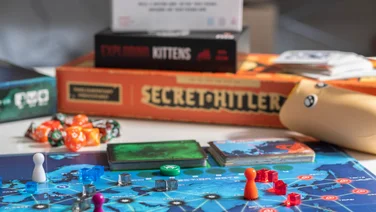To help us provide you with free impartial advice, we may earn a commission if you buy through links on our site. Learn more




You may not have heard of Rift – it snuck up on us with little fanfare – but it’s one of the most ambitious games we’ve come across. It seems to be aimed squarely at the 800lb-gorilla of the MMO world, World of Warcraft, and we can report that it’s done a mighty good job of matching, and even surpassing, Blizzard’s popular game in a number of areas.
Rift puts you in the world of Telara, a world ravaged by violent forces that appear in the shape of rifts, or portals to other dimensions, from which evil beings emerge. It follows the basic RPG conventions: you create a character based on one of four archetypal classes – Rogue, Warrior, Mage or Cleric – and then perform quests to gain experience, and as you gain levels you earn new abilities.
Each class is split into eight very different sub-classes, and in an early quest chain, you summon the ghost of each type of sub-class to capture its soul. You have room for only three souls at a time, but in a novel twist on the RPG genre, you can purchase further “Roles” that let you mix-and-match these souls to create a uniquely custom class.

Rift’s PvP battlegrounds offer a variety of map types and objectives
So, you could have a Rogue that starts with the souls of an Assassin, Riftstalker and Blade Dancer, and then purchase another Role that you fill with the souls of Ranger, Marksman and Saboteur. A further PvP (Player versus Player) soul is earned by winning PvP matches. This system gives unparalleled customisation of each class, and makes PvP combat much more interesting, as you can never be sure what combination of skills a certain character might have based on their appearance.
Your character progresses through the game by taking quests from computer controlled characters (NPCs), which award experience points. Once you reach certain milestones you level up, gaining access to new skills and abilities. These come in the form of Talent points, which are spent to improve each soul. As you spend more points in a talent tree, you also unlock new skills in the “root” of the tree.
As well as going on quests, there are the ubiquitous rifts, which appear randomly across the map in waves. Rifts also spawn groups of invaders who head for strategic points on the map, and a global quest will be given to all players in the region to help defeat the invaders. Individuals or small groups can also take on the rifts themselves, killing waves of guards and a final boss to seal the rift.

Some of Rift’s monsters are titanic bosses that take a whole group to bring down
Like World of Warcraft, there are many levels to Rift – a complex and rewarding crafting system, an epic Story quest chain that aims to immerse you in the story of Telara, a competitive PvP system, and numerous dungeons that are staggered to appeal to players of all levels.
What’s most impressive is the presentation and polish of the game. While there are bugs, it’s been one of the smoothest MMO launches we’ve experienced, and server performance is exemplary. Updates are small but frequent, and typically take the servers down for less than half an hour. The interface is fully customisable, with beautifully designed icons and engaging text.

Rift’s day and night cycles make for some atmospheric settings
It’s the small things that really impressed us, and it’s evident that Trion Worlds has gone through games like Warcraft with a fine-toothed comb to make sure everything works as players would expect. Rift’s graphics are far more sumptuous than Warcraft’s however, and the public quest system add an extra layer of game-play that Warcraft lacks.
Whether you’ve played Warcraft or not, you’ll still enjoy the variety and depth that Rift offers. With so much more to do and see, we’ll certainly be logging into Telara for the foreseeable future, so Rift wins our Best Buy award.
| Details | |
|---|---|
| Price | £24 |
| Details | http://uk.riftgame.com/en/ |
| Rating | ***** |






